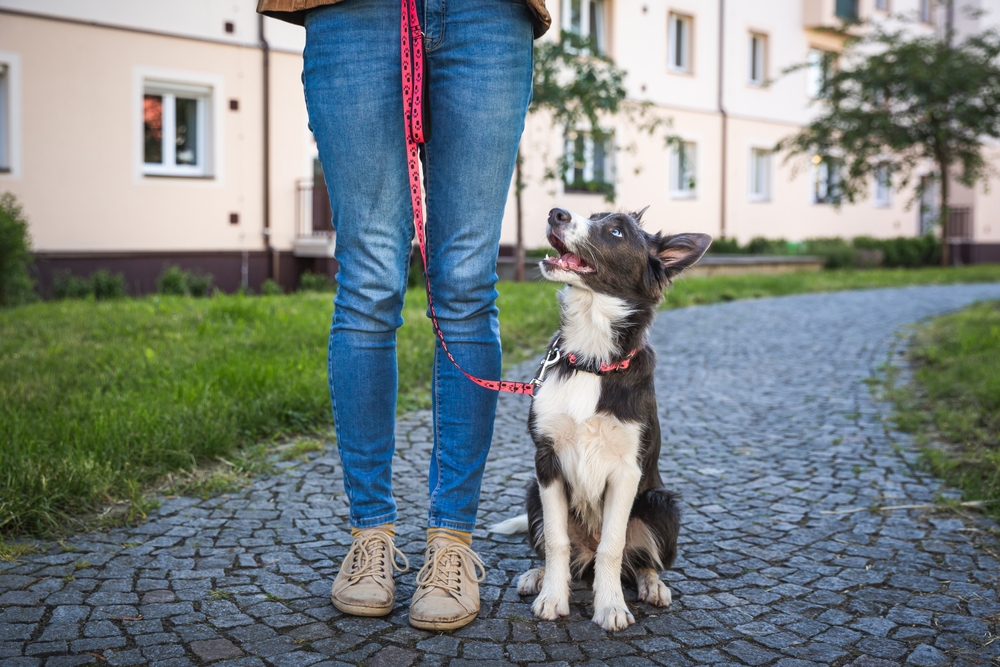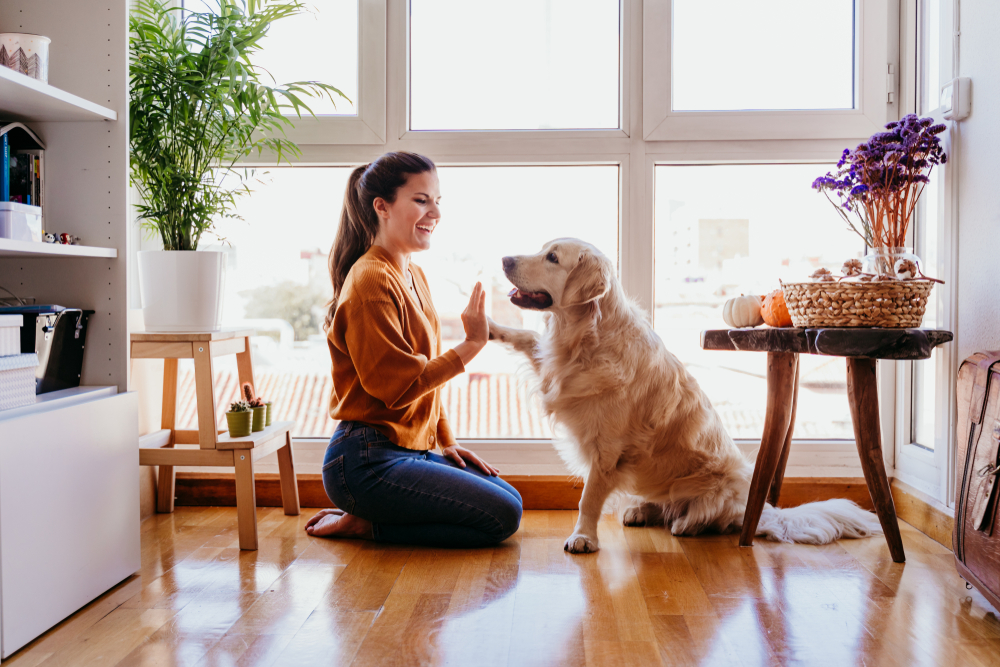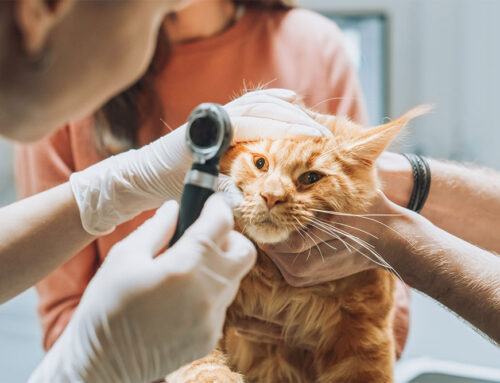Dog training is more than directing your dog to sit and stay. Through effective training, your dog learns important life skills that help them manage their emotions, control their impulses, and respond appropriately to you and their environment. Although you are likely familiar with the joke about the obedience school dropout, untrained dogs are no laughing matter—poor behavior is the number one reason for surrendering dogs to shelters, and the most common reason for humanely euthanizing dogs younger than 3 years of age. Step up your pup’s training—or give old Rover a refresher—by following our Livingston Veterinary Hospital team’s positive training tips.
Teach your dog polite greetings
Jumping is a naturally rewarding activity (i.e., fun for the dog), and humans generally reinforce the behavior through positive or negative attention (i.e., affection or punishment). These responses make breaking the habit difficult. Try exploring several techniques to determine which strategy is most effective in stopping your dog from jumping. Some options include:
- Be a tree — When your dog jumps, stop all movement and speech. Avoid eye contact, which can reinforce this bad behavior, likely triggering more jumping. Once the dog has all four paws on the floor, say “Yes,” or “Good,” and drop a treat between their front feet.
- Scatter feeding — When visitors arrive or ask to pet your dog, toss a handful of small treats at your dog’s feet to preoccupy your dog and keep their head down, which makes jumping impossible. Over time, dogs learn that looking down initiates a cycle of petting and food rewards.
- Alternative behavior — Teach your dog that the doorbell or knocking sound is a cue to perform an incompatible behavior (i.e., something they cannot do while jumping), such as fetching a toy or going to their bed.
Teach your dog leash etiquette

Excitable and energetic dogs struggle with loose-leash walking. Teach your dog that going further means going together. Ensure your dog burns off energy before you begin your walk—after all, it’s unfair to ask your energetic dog to take a leisurely stroll when they’re literally bursting at the seams. If you do not have access to a fenced area, use a 20-foot nonretractable leash, and let your dog run and play. After about 10 minutes, your dog will be more relaxed, focused, and ready to learn.
Begin by creating value for being near you. With your dog on a four- to six-foot leash, start in a standing position, and feed your dog a small treat reward where you want their nose to be (e.g., generally near your hip or knee). Once you have given your dog 5 to 10 tiny treats in a stationary position, take a small step and if they follow, reward them again in the correct position. Gradually add steps until you are walking together. Praise your dog for paying attention. Incrementally introduce distractions. If your dog pulls, stop and wait. When the leash is slack, praise them and offer a treat in the correct position. Reward your dog frequently for maintaining a loose leash, especially in distracting situations.
Teach your dog table manners
Dogs are opportunistic creatures. They can and will steal your sandwich. Although this conduct seems disobedient, the behavior is actually hard wired. Help your dog learn boundaries by teaching them to go to a station (i.e., a designated place such as a rug, dog bed, or platform) during food preparation and meals. Practice these training strategies:
- Build value for the station by feeding your dog there, and rewarding them for all interactions. Play games such as sending your pet to the station for a reward, then releasing them for petting. Chances are, they will gravitate back toward the station.
- To increase the value for staying in place, offer your dog long-lasting rewards such as a hollow toy stuffed with pet-safe foods.
- Keep the station within sight, so you can monitor your pet during meals. Randomly reward your dog for good behavior.
- If your dog leaves the station, gently guide them back, and make a mental note to reward them more frequently for staying in place.
- Gradually phase out rewards until you are only rewarding your dog at the end of the meal or food preparation period.
Dog behavior management secrets
Dog training is not an overnight cure for inappropriate behavior. Fortunately, management strategies can help you maintain your patience—and your sanity—while your dog is in training. To prevent unwanted behavior, appropriately manage your dog’s conduct by humanely controlling or manipulating their environment. Dog behavior management strategies include:
- Exercise — Physical activity relieves stress and anxiety, burns excess energy, reduces chronic disease risk, and can significantly improve your dog’s behavior.
- Mental engagement — Brain games (e.g., puzzle toys, treat-dispensing toys, snuffle mats) satisfy your dog’s instinctive behaviors and promote calmness.
- Schedule — Maintain a consistent daily routine to help your dog feel calm and secure, and avoid training setbacks. For example, if the neighbor’s dog causes yours to react, schedule your dog’s walk when you know your neighbor’s dog is indoors.
- Confinement — Crates, pens, and pet gates are an acceptable way to limit your dog’s access to certain areas, hazards, or events. If you confine or restrict your pet, do so for a limited time, and balance the confinement time with sufficient physical and mental exercise.
Dog training is not a one-and-done process, but a lifelong commitment between you and your four-legged friend. If you prefer in-person instruction, schedule your dog’s in-home training session with a certified positive-reinforcement (i.e., reward-based) trainer. If your dog’s misbehavior is more than a nuisance or they are exhibiting aggressive, fearful, or unpredictable behavior, schedule an appointment with our Livingston Veterinary Hospital team.







Leave A Comment